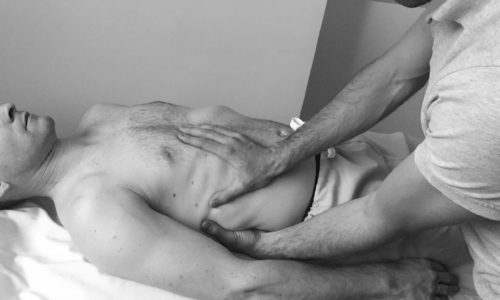How to Breathe ?
A fundamental aspect of optimal health and well-being is often overlooked: the importance of a good breathing pattern.
Every breath we take fuels our bodies with oxygen, vital for cellular function and energy production. Yet, many of us breathe inefficiently, shallowly, or irregularly, which can lead to a range of health issues.
From enhancing oxygenation to reducing stress and promoting relaxation, the benefits of mastering proper breathing techniques are profound and far-reaching. So, let’s embark on a journey to discover the power of breathing well and unlock its transformative potential in our lives.
The Diaphragm
The thoracic diaphragm is a sheet of internal skeletal muscle that extends across the bottom of the thoracic cavity. The diaphragm separates the thoracic cavity, containing the heart and lungs, from the abdominal cavity and performs an important function in respiration: as the diaphragm contracts, the volume of the thoracic cavity increases and air is drawn into the lungs.
The diaphragm is a C-shaped structure of muscle and fibrous tissue that separates the thoracic cavity from the abdomen. The dome curves upwards. The superior surface of the dome forms the floor of the thoracic cavity, and the inferior surface the roof of the abdominal cavity.
As a dome, the diaphragm has peripheral attachments to structures that make up the abdominal and chest walls. The muscle fibres of the diaphragm emerge from many surrounding structures. At the front, fibres insert into the xiphoid process and along the costal margin. Laterally, muscle fibers insert into ribs 6–12. In the back, muscle fibres insert into the vertebra at T12, descend and insert into the lumbar vertebrae at L1 & L2
Benefits of diaphragmatic breathing
Helps detoxify the body
70% of the body’s toxins are released through breathing
Breathing Relaxes the Mind/Body and Brings Clarity
Oxygenation of the brain reducing excessive anxiety levels and eases ‘foggy headedness’
Assist digestion
Deep breathing massages the intestines and assists their passage of contents
Breathing Increases Muscle
Controlled breathing strengthens and tones your abdominal muscles
Breathing Improves Posture
Good breathing techniques over a sustained period of time will encourage good posture
Breathing Improves the Nervous System
The brain, spinal cord and nerves receive increased oxygenation and are more nourished.
Seeing an osteopath can be beneficial for several reasons:
- Structural Alignment: Osteopaths are trained to assess and manipulate the musculoskeletal system to improve alignment. Poor posture or structural misalignments can restrict the movement of the rib cage and diaphragm, affecting breathing mechanics. By addressing these issues, an osteopath can help optimize the mechanics of breathing.
- Muscle Tension: Osteopaths can identify areas of muscular tension or tightness that may be restricting breathing. Techniques such as soft tissue manipulation, stretching, and myofascial release can help release tension in the muscles surrounding the rib cage and diaphragm, allowing for more effortless breathing.
- Rib Mobility: Restricted mobility in the ribs can impede the full expansion of the chest during inhalation. Osteopathic techniques such as rib mobilization can help restore normal rib motion, facilitating a fuller and more efficient breathing pattern.
- Diaphragmatic Function: The diaphragm is the primary muscle involved in breathing, and its proper function is crucial for efficient respiration. Osteopathic manipulation can help optimize diaphragmatic function by releasing any restrictions or adhesions that may be limiting its movement.
- Stress Reduction: Osteopathic treatment often involves techniques that promote relaxation and reduce stress levels. Stress and tension can contribute to shallow breathing patterns and respiratory dysfunction. By promoting relaxation and reducing stress, osteopathic treatment can help restore a more natural and efficient breathing pattern.
- Holistic Approach: Osteopathy emphasizes a holistic approach to healthcare, taking into account the interconnectedness of the body systems. Osteopaths consider not only the physical aspects of breathing but also factors such as posture, lifestyle, and overall health, to provide comprehensive care aimed at improving breathing patterns.
Overall, seeing an osteopath for a better breathing pattern can be beneficial for addressing both the physical and functional aspects of respiration, promoting optimal breathing mechanics and overall well-being. However, it’s essential to consult with a healthcare professional to determine the most appropriate course of treatment for your specific needs.
References
BREATHING PATTERN DISORDERS AND FUNCTIONAL MOVEMENT
https://www.ncbi.nlm.nih.gov/pmc/articles/PMC3924606/
Dysfunctional breathing: a review of the literature and proposal for classification
https://pubmed.ncbi.nlm.nih.gov/27581828/








